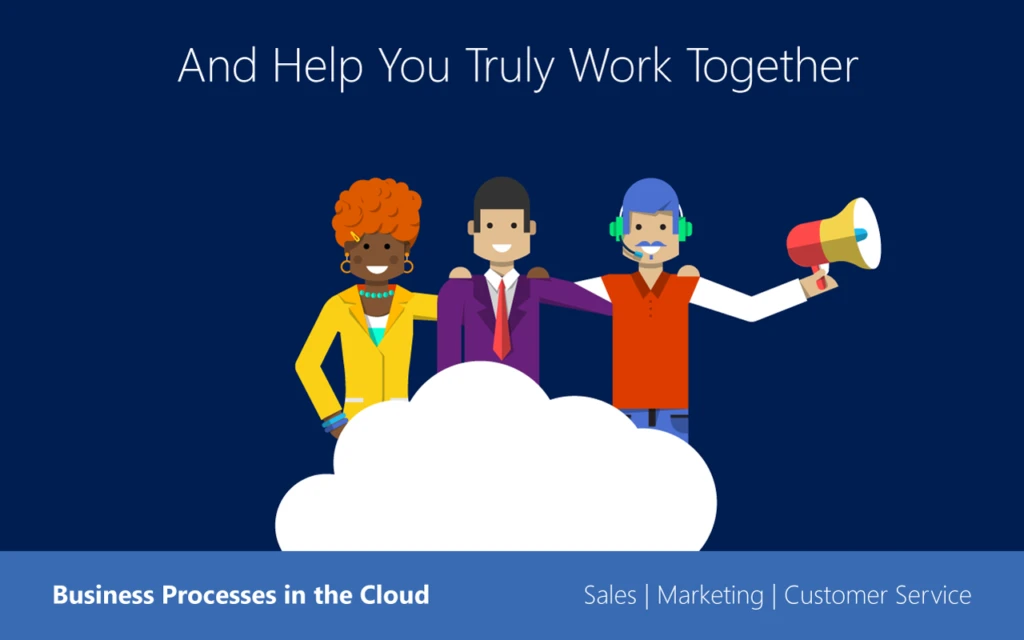
How Social Strategies Can Break Your Company’s Silos
If you’re still doing business the way you’ve always done business, you’re behind the curve. Maybe you understand that already and are scrambling to get ahead. Maybe you know something’s wrong but don’t know what, or don't know what to do about it.
You know the competition is always one step ahead. You never seem to be in the know when your customer starts asking questions that you didn't anticipate. You show up to meetings with customers with whom you once had a good relationship, but you leave feeling that you’re very much outside of their team.
If you’re in that position, it could mean that you haven’t adapted to the new social landscape that is fundamentally transforming how customers buy. This means you’re not connecting with customers; you’re losing them.
You may have ineffective account engagement, and it’s killing your business.
Tear down your silos
Sales, marketing and customer service are the big three customer-facing silos, and they’re each focused on one part of the customer picture. However, the customer is the same no matter who they’re talking to. They don’t care about your silos. They’re just having a bad experience.
To fix this bad experience, companies need to break down the boundaries between departments. Nexxworks sums up why:
“…it’s about letting go of those damned useless boundaries: between channels, between digital and the rest, between departments, job levels, etc. Stop compartmentalizing everything in neat and `well-organized’ little silos. It is frankly absurd to disintegrate all your customer efforts into poorly connected departments that often speak with different voices.”
Those different voices can lead to a bad experience for everyone.
Changes in the way customers buy are forcing companies to adapt. Savvy buyers are using social and the Internet to learn everything they can about a product or service before they even speak to a salesperson. Likewise, sophisticated competitors are using social media and technology to outperform organizations that aren’t doing the same.
Therefore, companies must create an integrated customer experience, or customers walk. An integrated experience gives everyone access to a wealth of information about customers´ perspectives, goals and values. It creates an opportunity to be truly responsive to customer needs and puts the company in a position to understand what customers will need next, before they even know themselves.
So, the customer service department knows about the campaigns the marketing department is running and integrates them into service calls. Marketing sees what customers are saying to Customer Service and builds that knowledge into the next campaign. Sales gets leads from Customer Service, while giving them a clear view of the customer’s most recent buying activities.
That’s how social is breaking the silos and shattering traditional ways of doing business. An inside-out perspective is taking shape, where sales, marketing and customer service join forces to leverage every customer interaction – ensuring customers receive a consistent, amazing experience every time.
Businesses that understand this will become leaders and trusted partners.
Businesses that don’t? They become irrelevant.
Just listen to social selling expert Barbara Giamanco spell out one fundamental value in social listening:
“It works… Using an approach learned during a social selling program we conducted, a sales professional at a Fortune 500 high tech company closed a $500,000 deal in less than 30 days: after being stonewalled for 3 years.”
Investing in a strong social strategy is like investing in a crystal ball. It shows you the next purchase a customer will make. It shows you how happy or unhappy they are. It shows you how customers want to be influenced and how to engage them in the way they want.
A strong strategy maximizes customer engagement value and creates a propensity to sell more, while developing relationships with customers who view you as a trusted partner. It connects you with customers who recommend you to new customers in a way advertising can’t.
You must make the customer the heart of the process in order to succeed. Make your company’s understanding of its customers available to the people who need to understand them, i.e., right at the moment when you need to deliver the best possible customer experience.
When you succeed, you improve your ability to bring value to the table as a cohesive, aligned organization, allowing you to leverage knowledge about your customer’s goals in order to sell smarter. You build a stronger foundation for providing an exceptional customer experience: earning your customer’s trust. You position yourself to help your customer solve current challenges, while anticipating their future needs.
When you do that, you transform the way you sell, market and serve your customer. Your customers? They’ll be effectively engaged, ready to extend their trust and eager to buy.
Download the eBook & watch the webcast for more information
